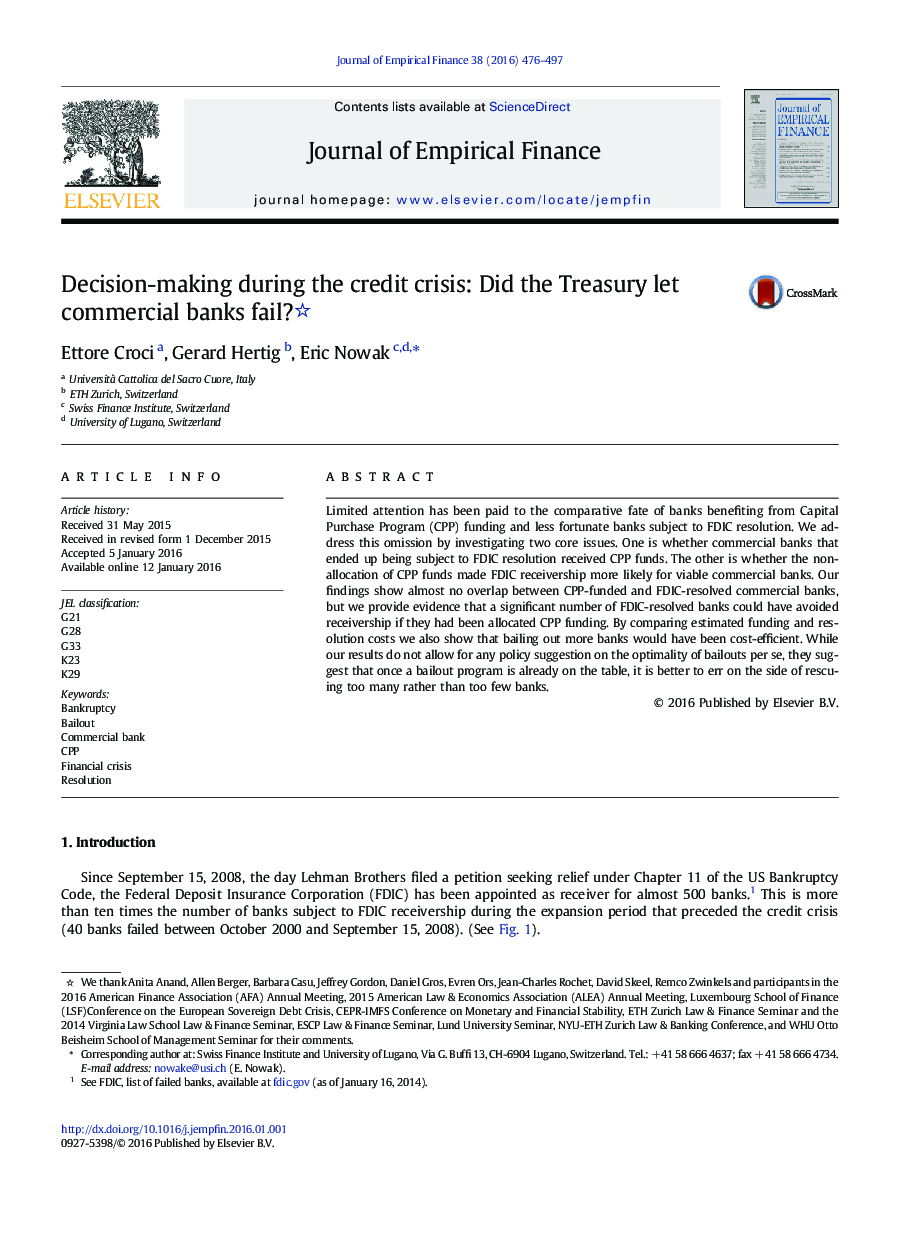| Article ID | Journal | Published Year | Pages | File Type |
|---|---|---|---|---|
| 6481229 | Journal of Empirical Finance | 2016 | 22 Pages |
â¢We study the interaction between TARP CPP bailouts and FDIC resolutions during the Financial Crisis.â¢We find that the Treasury did a good job in identifying banks that were viable enough to deserve a bailout.â¢We also find that the Treasury may have been overly restrictive in its funding decisions.â¢If a bailout program is on the table, the policy should be to err on the side of rescuing too many rather than too few banks.
Limited attention has been paid to the comparative fate of banks benefiting from Capital Purchase Program (CPP) funding and less fortunate banks subject to FDIC resolution. We address this omission by investigating two core issues. One is whether commercial banks that ended up being subject to FDIC resolution received CPP funds. The other is whether the non-allocation of CPP funds made FDIC receivership more likely for viable commercial banks. Our findings show almost no overlap between CPP-funded and FDIC-resolved commercial banks, but we provide evidence that a significant number of FDIC-resolved banks could have avoided receivership if they had been allocated CPP funding. By comparing estimated funding and resolution costs we also show that bailing out more banks would have been cost-efficient. While our results do not allow for any policy suggestion on the optimality of bailouts per se, they suggest that once a bailout program is already on the table, it is better to err on the side of rescuing too many rather than too few banks.
